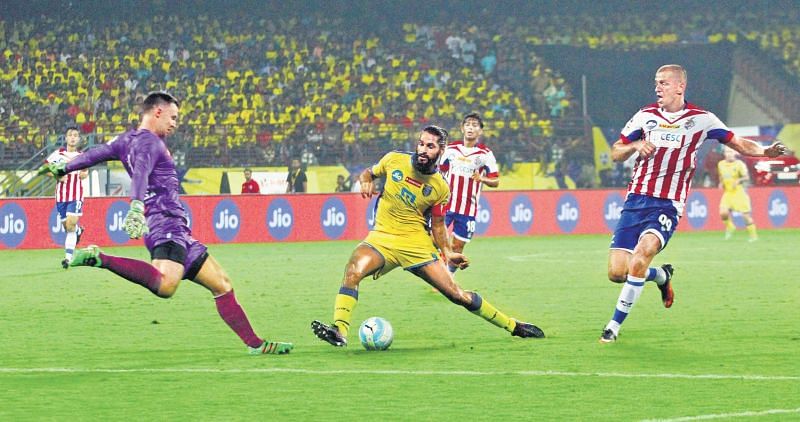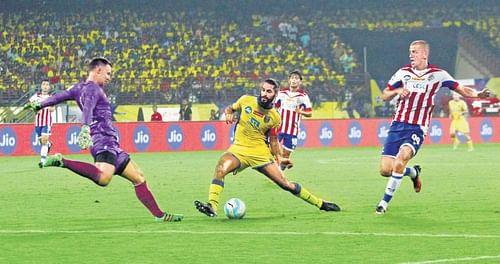
ISL 2017: Kerala Blasters and Delhi Dynamos eligible to sign foreigners in January transfer window

Kerala Blasters and ATK faced off in the ISL opener (Image courtesy: ISL)
What's the story?
After a long wait, the new season of the Indian Super League is finally underway and is set to complete its first week as the Delhi Dynamos and FC Pune City face off in Pune on Wednesday. The teams have put together their squads for the latest campaign, which consists of Indian players picked from the draft that took place in July this year and other players -- both Indian and foreign, signed outside it.
However, with the next transfer window slated to open in January 2018, only two ISL teams i.e. the Delhi Dynamos and Kerala Blasters, out of the ten can sign foreign players as the remaining eight sides have already filled their quota of a maximum of eight foreigners in the squad.
In case you didn't know
The new rules this season allow for only a maximum of five foreign players on the pitch for a team at a given point of time, as opposed to the previous rule of six. In the team's roster, each team can not have more than eight foreigners.
The heart of the matter
In the pre-season, clubs such as FC Goa, Mumbai City FC and Bengaluru FC were quick to complete their quota of foreign players while NorthEast United announced all eight signings together on deadline day.
The Kerala Blasters and Delhi Dynamos are the only teams who have a total of seven foreigners and as a result, they are eligible to sign another player when the official transfer window opens in January.
What's next?
The Blasters and Dynamos will have to play much of the first half of the season with seven foreigners but will be at an advantage when January comes, as they can buy a player as per their requirements at the time.
Author's take
It will certainly be interesting to see how the two teams will approach entering the market during the middle of the season and if their gamble of playing with one foreigner less will pay off when the league ends.
Also read: ISL 2017: Top 10 managers in ISL history by win percentage